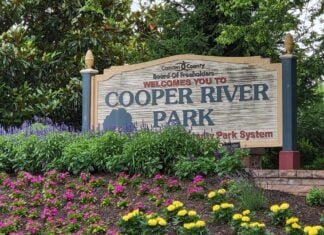The spring season means preparation for the regrowth of the crops at Valenzano Winery.
The staff recently finished pruning the vineyard for the annual regrowth of grapes.
In April, there are two to three weeks when buds breakthrough, beginning the new crop.
Unlike classic agricultural farms, wineries don’t sow new seeds each year. Rather, when new varietals are added to a selection of wine, vines are raised from stock.
“It depends on what is being planted, but we’ll buy 2- to 3-year-old vine stock 12-inches in size. We’ll plant the root stock. Those buds grow planted new vines,” owner of the winery Anthony Valenzano said. “The first year is spent training that vine, we’ll get a light crop and drop it in order to establish the crop. By 2015, we should have a good crop.”
Last season, approximately 60 percent of the crops suffered from late frost in May. The winery owns 88 acres of land, 24 of which have numerous types of grapes, including concord, the type best known for jelly production and Valenzano’s Shamong Red. The remaining 64-acres are leased for non-commercial pumpkin and hay production.
Despite yielding 120 tons of grapes, Valenzano’s purchases grapes from local wineries, including Bellview in Landisville.
“If they have a surplus of fruit we buy it up,” Valenzano said. “There’s a big demand for our wines. We don’t have any surplus, so we’re looking for other farms to grow for us.”
According to Valenzano, their winery is one of the biggest purchasers of fruit in the state.
Blueberries are acquired from companies in Hammonton and Miller’s Farm in Tabernacle. Cranberries for both red and white cranberry wines are purchased from Lee Brothers Inc. in Chatsworth.
“We were the first people to start making cranberry wine. White cranberries are really hard to get. We have cranberry bogs grown just for us,” Valenzano said.
One hundred acres are utilized off-site for the production of fruit for the winery.
The winery is included in the Outer Coastal Plain, an indicator of the region, comparable to Napa Valley or Sonoma Valley.
There are more than 30 wineries and commercial vineyards in the Outer Coastal Plain American Viticulture Area. The region is located between Philadelphia and the Jersey Shore with more than 2.25 million acres in the heart of South Jersey suited to growing dozens of wine varietals, according to Vintage South Jersey, part of the South Jersey Tourism Corp.
“It’s a designated area for growing grapes. When most people see Napa Valley on a label, it usually means it’s a quality wine. It’s similar for the Outer Coastal Plain, but that means more putting out good wines and building the reputation,” Valenzano said.
The vineyard produces half a million bottles of wine per year, according to winemaker Michael Jones.
The wine is made at the time of harvest.
“We’ll pick grapes that day and crush them or press them depending on red or white, we don’t let them sit that day,” Jones said.
The moderate spring and summer climate of South Jersey mixed with the sandy soil composition is a good combination for grape production.
“It depends on the grape, but some like more moisture. We like it to be temperate with constant rains, not heavy rains,” Jones said.
“Traditionally, it’s a well-drained soil where we’re at. If we do get a lot of rain, it’s not like the plants are just sitting in water. The biggest concern is how much sun you have and the last frost of winter,” Valenzano said.
When this year’s crop is ready, it will be harvested and crushed for the production of wine.
Valenzano’s yields 40,000 cases of wine each year, according to Jones.
“We’re a family business. We make wines for all tastes, we don’t exclude anybody,” Valenzano said.









